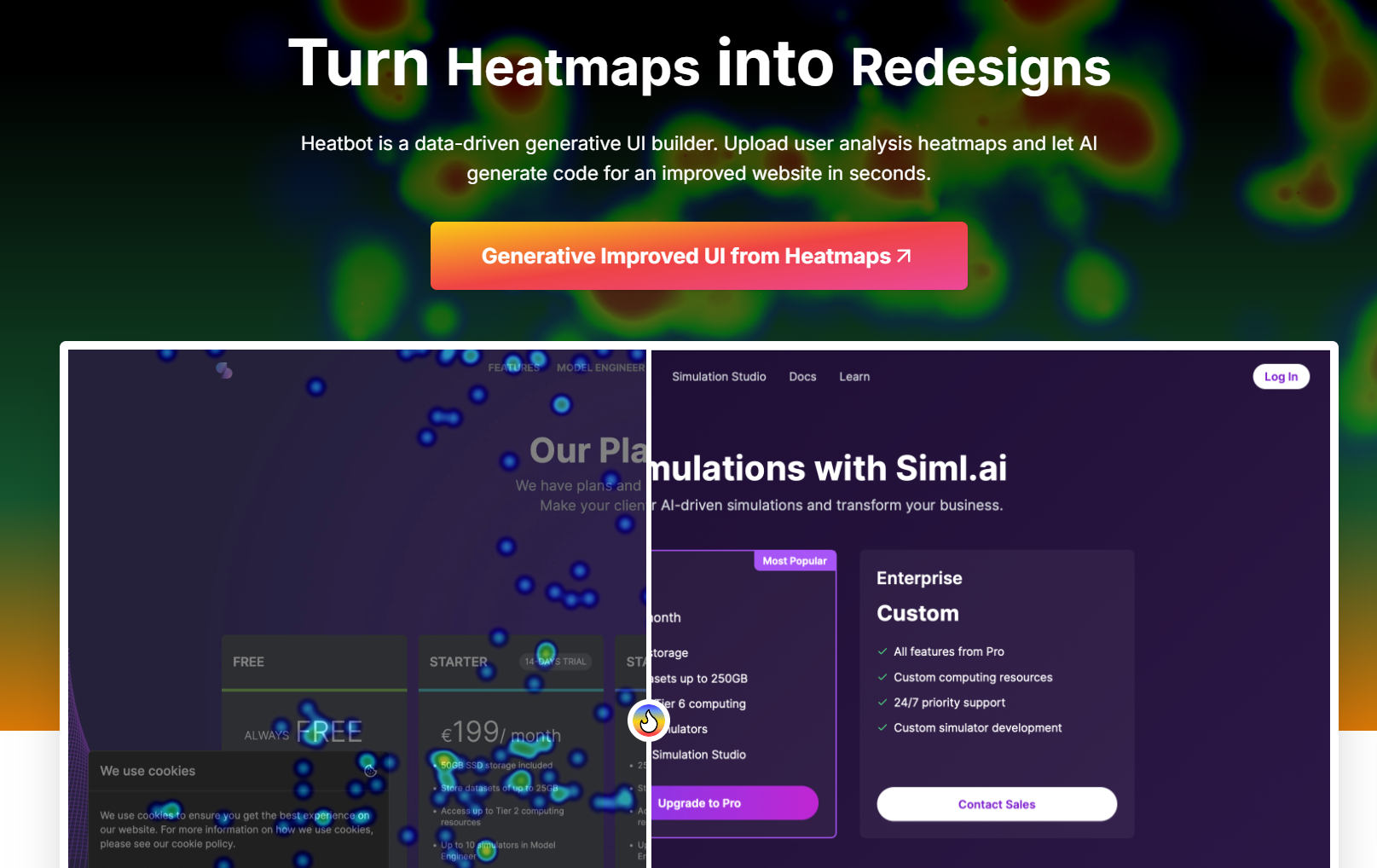Table of Contents
In the ever-evolving landscape of web design and user experience, a new player has emerged that promises to revolutionize how businesses approach website optimization. Heatbot, a cutting-edge platform launched recently, leverages the power of artificial intelligence to transform user behavior data into actionable website improvements. It uses heatmap data to improve website design. Heatbot takes a screenshot of a website and overlays it with a heatmap to identify areas of high and low user activity. It then uses this information to generate suggestions for how to improve the website’s design. Some of the specific improvements that Heatbot can make include improving conversion rates, improving accessibility, and reducing visual clutter.
The Challenge of Heatmap Analysis
For years, marketers and UX designers have relied on heatmaps to visualize user interactions on websites. These color-coded representations show where users click, move their cursors, and scroll, providing valuable insights into user behavior. However, interpreting this data and implementing changes has traditionally been a complex, time-consuming process requiring cross-functional teams and significant resources.
Enter Heatbot.io
Heatbot.io aims to streamline this process by automating the analysis and implementation phases. The platform’s core promise is simple yet powerful: upload a website screenshot and its corresponding heatmap, set improvement goals, and let AI generate an improved user interface.
How It Works
- Users upload a screenshot of their website.
- They then upload the heatmap image generated from tools like Hotjar, Mouseflow, or CrazyEgg.
- Improvement goals are set, either using pre-defined options or custom prompts.
- Heatbot’s AI analyzes the data and generates improved HTML, CSS, and JavaScript code.
The result? A redesigned UI that’s data-driven and optimized for better user engagement and conversion rates.
Features and Pricing
Heatbot.io offers three tiers of service:
- Basic Plan ($9/month): Aimed at individuals and small projects, it allows up to 2 projects and 15 generations per day using Bootstrap.
- Pro Plan ($29/month): Geared towards power users and small businesses, it supports up to 15 projects, 50 daily generations, and includes advanced features like custom improvement goals and comprehensive reports.
- Enterprise Plan (Starting at $2,990/month): Offers unlimited usage, custom integrations, and 24/7 support for larger businesses with more complex needs.
All plans include the ability to generate HTML, CSS, and JavaScript, with higher tiers supporting popular frameworks like Tailwind CSS and ShadcnUI.
The Technology Behind Heatbot
While the company doesn’t divulge the specifics of its AI models, the Pro plan mentions the ability to switch between different AI models, including Claude Sonnet 3.5 and GPT-4 variants. This suggests that Heatbot is leveraging some of the most advanced language models available to power its generative UI capabilities.
Industry Reception
Early feedback for Heatbot.io appears positive, with several industry professionals expressing excitement about the platform’s potential. Mubs (@mubashariqbal) noted the common struggle of interpreting heatmaps, saying, “Sounds like you’ve found a solution to this!”
Others, like Stephen MΞSNILDRΞY (@StephenMesnild1), see the potential for Heatbot to be a “game-changer” in automatically improving conversions based on heatmap results.
Looking Ahead
As businesses increasingly focus on data-driven decision-making, tools like Heatbot.io could become invaluable assets in the UX designer’s toolkit. By automating the process of translating user behavior data into concrete UI improvements, Heatbot has the potential to significantly reduce the time and resources required for website optimization.
However, questions remain about the nuance and creativity that AI can bring to design decisions. Will Heatbot’s generated designs truly capture the subtleties of brand identity and user preferences? Can AI balance aesthetic considerations with functional improvements?
As Heatbot.io continues to develop and gather more user feedback, we’ll be watching closely to see how this AI-driven approach to web design evolves. For now, it represents an intriguing glimpse into a future where data analysis and design implementation are seamlessly integrated, potentially transforming the way we approach website optimization.


